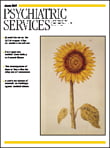Mind, Brain, and Schizophrenia
In this highly technicalized era in which the work of a neurobiologist is all too rarely directly relevant to the clinician, Mind, Brain, and Schizophrenia provides a welcome synthesis of neurobiological explanatory models and clinical manifestations of schizophrenia. Peter Williamson frames the thesis of this book with an analogy to when the circulatory system was proposed 400 years ago to explain heart failure. Whatever the specific cause of heart failure—genetics or renal failure, for instance—the circulatory system mediates the final clinical syndrome. Williamson argues that the symptoms of schizophrenia can be thought of in an analogous manner and that the search for the single ultimate cause of schizophrenia should be deemphasized in favor of focusing on the "final common pathway" of the disorder.
The bulk of the book considers various perspectives on the neurobiology of schizophrenia, with chapters dedicated to neuronal circuits, neurodevelopmental models, neurotransmitters, psychophysiology, neuropsychology, neuroimaging, and neuronal degeneration. The text summarizes large bodies of information in relatively accessible language, although at times it reads somewhat like a textbook with an unclear target audience. At other points it loses the focus of developing its thesis and instead methodically catalogues research developments over time.
The greatest strength of the book is in the final few chapters, which begin to synthesize information about regions and circuits that are implicated in the pathophysiology of schizophrenia. Williamson observes that the heterogeneity in the location and type of observed abnormalities could result from damage to any part of a series of circuits needed for normal functioning.
Williamson goes on to describe two general sets of models, the first involving disconnection and coordination of information processing, including observations about aberrant lateralization, corticocortical and corticosubcortical disconnections, abnormal arousal of emotional centers, and cognitive dysmetria. The second model involves abnormalities of the basal ganglia-thalamacortical circuits, including evidence for the failure of self-monitoring, subcortical neurotransmitter imbalances, the importance of the nucleus accumbens, and dopamine sensitization. Williamson transitions easily from basic science to clinical relevance, and this perspective is extremely helpful in conceptualizing the pathophysiology of schizophrenia.
However, although Williamson's bird's eye view is so helpful in trying to make sense of the tremendous quantity of emerging data, his circulatory system analogy seems to break down in the realm of treatment. That is, though the clinical manifestations of heart failure constitute a typical syndrome, treatment interventions rely critically on the precise etiology of the failure. Similarly, the development of new pharmacologic and psychosocial interventions for schizophrenia seems to depend to some degree on an individualized understanding of what requires attention most acutely.
One absence from the text of relevance to readers of this journal is that its content is focused on explaining symptoms and does not venture to consider how the various models fit with changes that accompany rehabilitation efforts. For instance, it would be interesting to consider how the discussion of neuronal degeneration fits with the evolving understanding of neurobiological changes accompanying improvements in cognitive function or areas of compensatory function.



